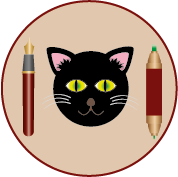Homingbird
Homingbirds are a species of swift and robust birds used for delivering short messages. Unlike homing pigeons, homingbirds are able to memorize and repeat short messages verbatim, mimicking the voice of the person sending the message.
Homingbirds used as messengers are imprinted on two people at two different known "homes." When one of the people gives an imprinted homingbird a signal word or sound, the homingbird will memorize whatever that person says until another signal word or sound is given. The memorization is automatic and conditioned; the bird does not need to practice to memorize the phrase; however, the number of words that the homingbird can memorize is limited to about twenty. After flying to its other home, finding the second person it has been imprinted on, and hearing another trained signal word or sound, the homingbird will repeat back the phrase that it has memorized exactly, in the voice of the person that conditioned the phrase.
Like homing pigeons found on Earth, homingbirds can also be used to carry physical messages and small objects between their homes.
Basic Information
Anatomy
Homingbirds are relatively large birds somewhat resembling a crow or a large magpie. Their plumage and bills are found in a variety of colors, from gray to blue to green, with different color variations found in different areas of the world. Their heads and tails are often black or dark gray, and wing tips white or some contrasting color.
Biological Traits
Homingbirds are swift and agile flyers, reaching close to 100 mph (161 kph) in bursts of speed. Despite their speed, wild homingbirds often fall prey to Steppe Gyreagles where their ranges overlap.
Genetics and Reproduction
Homingbirds usually lay five or six eggs in the early spring. Usually three or four reach maturity. From hatching, the young homingbirds are able to fly in about 45 days. They are fully mature and able to reproduce in about a year.
Dietary Needs and Habits
Homingbirds are omnivorous, and in the wild they will eat most anything, grain, insects, fruit, even small animals they are able to catch and kill.
Additional Information
Social Structure
In the wild, homingbirds gather in gangs of 20 to 40 individuals. The gangs sometimes cooperate to hunt small mammals, like mice, shrews, and even young rabbits.
Domestication
Homingbirds are easily domesticated and trained to deliver short messages between two homes, one being their primary home nest. Their common name is based on this ability.
Geographic Origin and Distribution
Homingbirds are found in the wild across most temperate areas of Derkomai. They are not found in deep desert or arctic areas, or in mountainous areas above the treeline.
Average Intelligence
Homingbirds are highly intelligent, one of the few species where individuals are able to recognize themselves in a mirror. They are also able to mimic perfectly a huge variety of sounds, including the voice of Human and Elvirim people. They can be trained and conditioned within a very short time to memorize and repeat back verbatim short phrases with the voice of the trainer. They also have very strong homing instincts, which is the basis for the name by which they are called.
Perception and Sensory Capabilities
Homingbirds have excellent eyesight and hearing.

Homingbird by Peter Nelson (Zero Sum Games)
A wild Homingbird in flight
Lifespan
5 to 10 years
Average Weight
Approximately 12 ounces (340 grams).
Average Length
From head to tail, homingbirds average 24 inches (61 cm).




These sound like incredibly useful birds to have around, though I think I would have to get used to hearing the voice of a friend coming out of a bird. I love the name!
Thank you for taking time to read my article! The name just randomly popped into my head one day as a portmanteau of "homing pigeon" and "hummingbird", and I thought it would be a fun name for the "homing pigeons" of Derkomai, and the concept just grew out of the name.